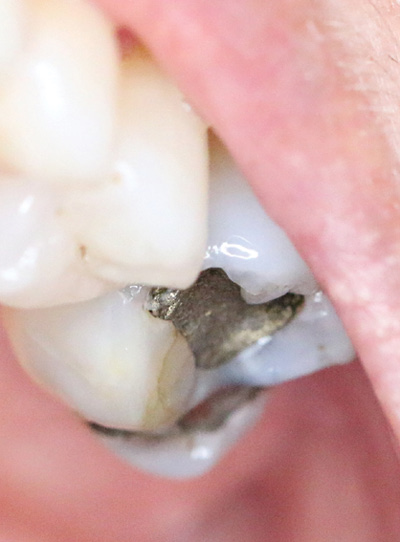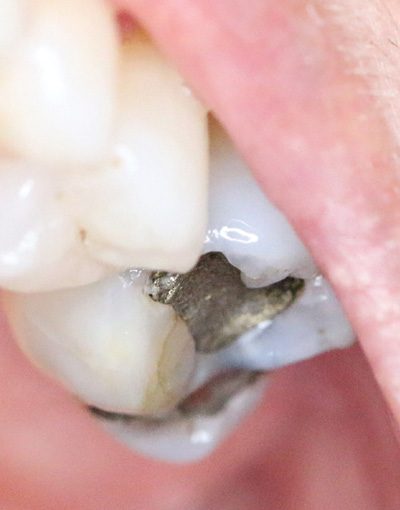Patients are asking if amalgam removal would help
Nancy W. Burkhart, BSDH, EDD

Amalgam on #14. Courtesy of Carol Perkins, RDH, BA.
Your patient today is Jennifer, a patient of record who has been diagnosed with oral lichen planus confirmed through a biopsy. During your initial assessment, Jennifer asks the following question: “If I have oral lichen planus, should I remove my amalgams because of mercury leakage? I have seen postings on the internet and engaged in conversations on this subject suggesting that amalgam/mercury may be contributing to my oral lesions.”
This question is asked frequently by patients who have obtained information from various sources and are concerned about the long-term effects of mercury in the environment, particularly in their own mouths. Many patients want to know if removing amalgams will assist in improvements with oral lichen planus or their general health. Since lichen planus normally affects the adult population (mainly in age groups over 40 years of age), many patients with lichen planus also may have one or more amalgam restorations. Amalgam was the restoration of choice for many years in the United States. Many offices have stopped using amalgam mainly because better restoration materials have come on the market in the past several decades. With this said, many clinicians will tell you that amalgam is a strong material and, when properly placed, will last for decades.
